Tattoo Style
The word “tattoo” is used in many languages, not least also in English, to describe the creation of permanent body art by inserting some kind of ink into punctures in the skin made with a sharp object. In the past, tattooists in many cultures used special combs, sharpened bamboo sticks or similar tools to create tattoos; today’s tattooists mostly work with a machine that inserts the colour pigments into the skin with the aid of one or several vibrating needles. The skin is therefore no longer punctured by applying physical strength but mechanically.
The first tattooing machine was patented by Thomas A. Edison in 1877; he called his invention a “stencil pen”. Edison had the engraving of objects in mind when he developed it. A device called a “tattoo gun” was patented in 1891. It was based on Edison’s machine, but was already designed specifically for tattooing.
Tattoos have a long-standing tradition in various cultures all over the world. Originally, they were probably motivated by religious beliefs. In the western world, they are now simply viewed as decorative and as a status symbol. In some countries, such as China and Japan, for example, they are still frowned upon and may only be shown in public in certain circumstances or not at all.
For a long time, they only decorated the bodies of convicts and sailors in Europe, too. In Germany, for example, this has gradually changed since the 1990s. The motifs are now international; many tattooists view themselves as artists, intend to provide insights into other cultures and also categorise tattoos according to style. David Beckham, Rihanna, Justin Bieber – tattoos have not only become socially acceptable but are also a status symbol and an expression of your personality.
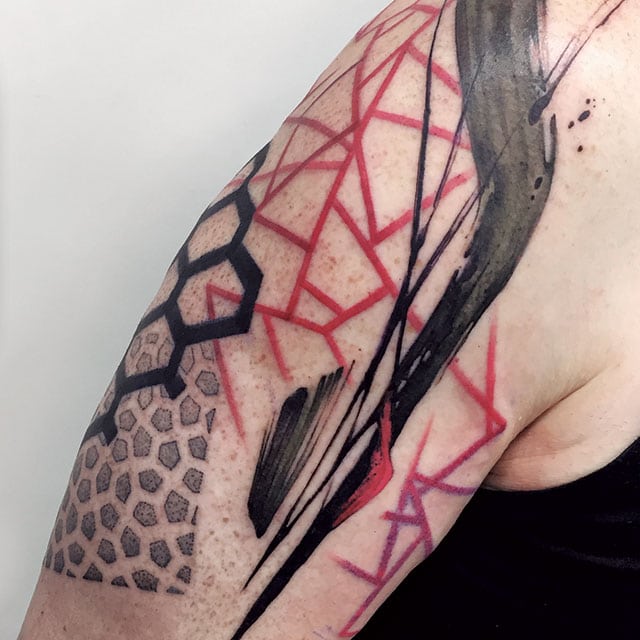
Geometrik Tattoo
Geometric tattoos are generally understated and clearly structured, yet nevertheless impressively meticulously executed and symmetrical. This style creates body art designs that consist of geometric shapes such as triangles, squares and circles. With its delicate and perfectly executed lines, a geometric tattoo is truly eye-catching. However, the tattooist must work incredibly accurately. Our tattooists have the requisite experience and the steady hands that are necessary to create attractive geometric tattoos. These perfectly executed tattoos look striking both individually or also in combination with other styles. Whether small or large, a mandala or an animal or flower motif designed with geometric shapes – a geometric tattoo is body art at its best. Our man for geometric tattos is Fernando.
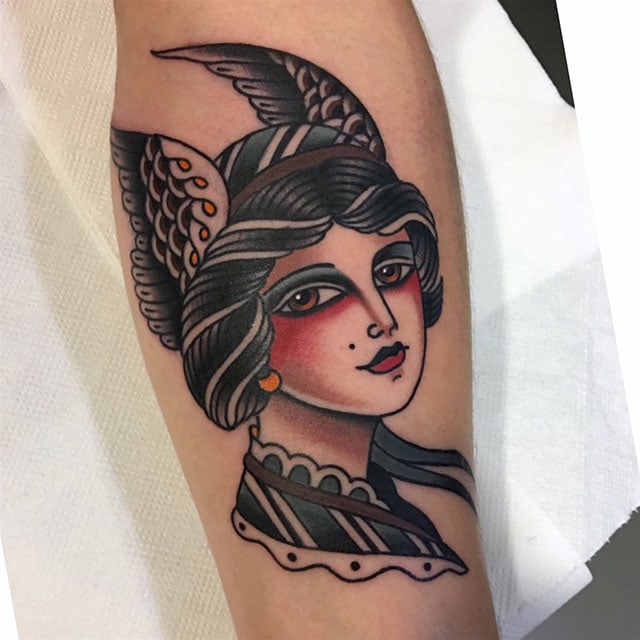
Oldschool Tattoo
Sailors from the western world discovered the body paintings of other cultures on their travels a few hundred years ago. Inspired by what they saw, they got tattooed themselves, usually on their upper arms or calves. The tattoos were mementoes of their travels or reminders of home; at the same time, they were also good luck charms. In the early to mid-20th century, the tattoo scene in the western countries also expanded on shore. Around this time, American tattoo artists created a style of tattoo called “old school”. An old school tattoo is characterised by simple structures, thick outlines and strong colours. Even today, this style is still guided by the technical limitations of that time. An old school tattoo therefore features hardly any shading or particular stylistic, elaborate detailing. The colour spectrum was and is also limited. Typical motifs are nautical symbols such as anchors or lighthouses, roses, pinup girls or Indians. Our tattooist Will have a particular talent for great old school tattoos.
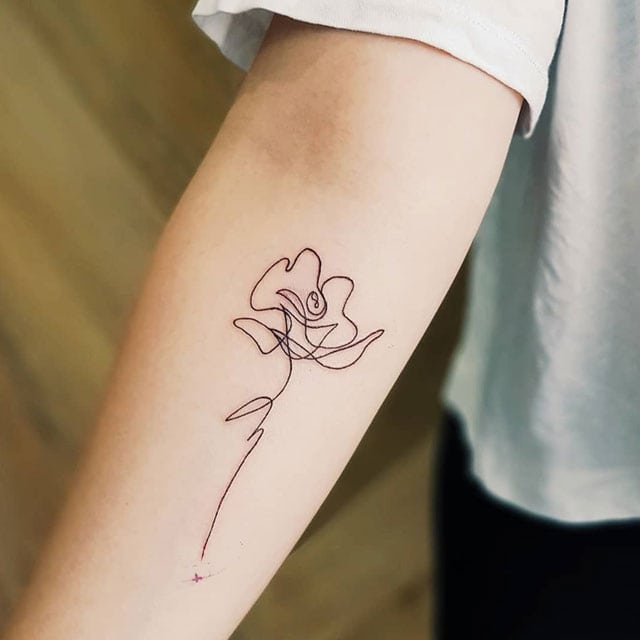
Fineline Tattoo
A fine line tattoo is a usually small tattoo with extremely fine details. It is often quite inconspicuous and is easy to cover up, if needed. The technique was developed in the USA in the 1980s as a contrast to the large-scale and striking tattoos common at the time. A fine line tattoo calls for plenty of experience and a steady hand, as even the tiniest mistakes immediately stand out. The range of motifs suitable for fine line tattoos is very varied. Whether names or quotes, detailed animal motifs or delicate flowers – the fine line technique can be used for many designs. Thanks to our experienced tattooists, you will get a beautiful fine line tattoo with precise lines and exquisitely executed surface textures. Our tattoo artist Will, Fernando and Stefi can you help
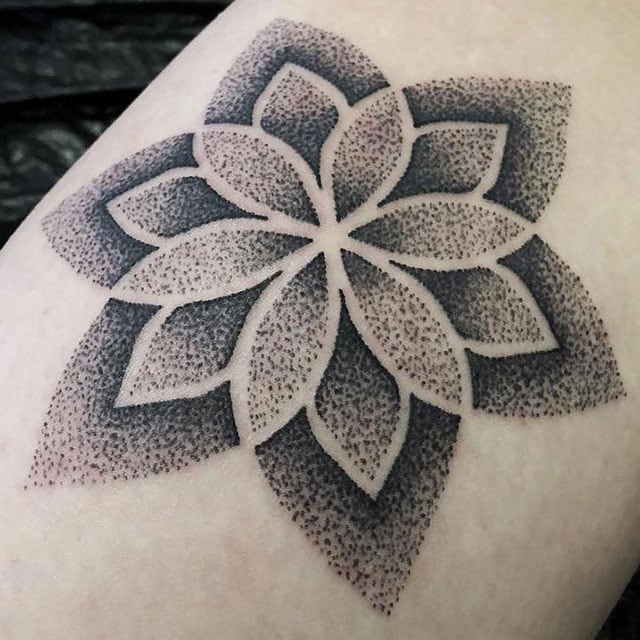
Dotwork Tattoo
A dotwork tattoo is a work of art created from countless small dots. Many differently sized dots form the design’s shapes and lines and are also used to colour in the motif. A dotwork tattoo is mainly created with shades of black and grey. Thanks to the complex technique, these tattoos are extremely detailed and have a lot of depth. Choosing the right dot size and the correct distance between the individual dots results in genuine works of body art. The dotwork style was originally inspired by late Impressionist artworks. It is often used for mandalas or in combination with other techniques, as dotwork is ideal for extremely detailed depictions of animal fur, for example. Our tattooist Fernando and Will can create a particularly beautiful dotwork tattoo on your skin.

Japanese Tattoo
In Japan, tattoos are still not considered acceptable in public even today, as this body art was only associated with prostitutes, coolies and criminals for a long time. The Ainu, an indigenous ethnic minority that was gradually driven into the far north of the country, were also tattooed. The Ainu’s tattoos are called “anchi-piri”, although they are rarely seen now. Japanese tattoos are usually unique: they often feature images from Japanese mythology, such as demons and dragons or the good and evil spirits, but also everyday motifs such as cherry and lotus blossoms, or symbols that are considered lucky, like cranes, turtles or carp. Scary folklore tales about countless ghosts called “yōkai”, “obake” or “bakemono” in Japanese have also influenced the visual language employed by Japanese tattooists. They were particularly popular in the late 19th century. Japanese tradition dictates that you should only be tattooed by one artist throughout your entire life. Over the years, this results in a full body tattoo called a “body suit”. At la Rebelle Suisse, you should contact Will and Fernando if you would like a Japanese tattoo or a tattoo inspired by the Japanese style.
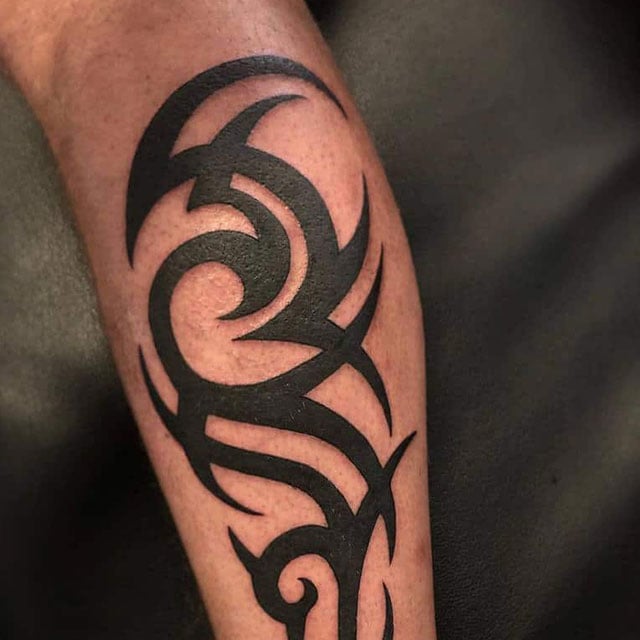
Tribale Tattoo
Tribal tattoos have a long tradition. They have been around for as long as several thousand years and were traditionally used to indicate that someone belonged to a particular tribe, for example by the indigenous peoples in Polynesia or the Celts. Sailors then spread this body art style all over the world. Tribal tattoos literally boomed in the 1990s. They were particularly popular with female tattoo fans as a rump motif. Tribal tattoos are still one of the most popular tattoo styles. Men often decide to go for a tribal tattoo on their biceps as it makes their muscles look bigger. Tribal tattoos are a good way to express strength and power. However, delicate patterns are also an option. Tribal tattoos are usually fantasy symbols or self designed motifs; let your creativity run free.

Maori Tattoo
Polynesian Tattoo
The indigenous peoples of New Zealand and the Polynesian islands are particularly well-known for the geometric patterns and symbols they used to etch into their skin. A Maori tattoo always has a meaning; the symbols go far beyond a merely decorative purpose. The elaborate patterns that are typical for a Polynesian tattoo are firmly rooted in the local culture and reflect the wearer’s beliefs. A Maori tattoo may well cover the entire body. The indigenous peoples of New Zealand and the Polynesian islands frequently also have face tattoos; however, in the western world, a Polynesian tattoo is usually limited to individual parts of the body such as one shoulder, an arm or a leg. By the way, Maori tattoos are a just one category of Polynesian tattoos: in geographical terms, Polynesia encompasses New Zealand, Hawaii and Easter Island. A Polynesian tattoo also often features a “tiki”, an image of a human figure that represents a demigod and is supposed to protect and guard the wearer. Tribal art figures are often so extremely stylised that it is impossible to spot the actual image featured at first glance. There is some cool stuff for Fernando.
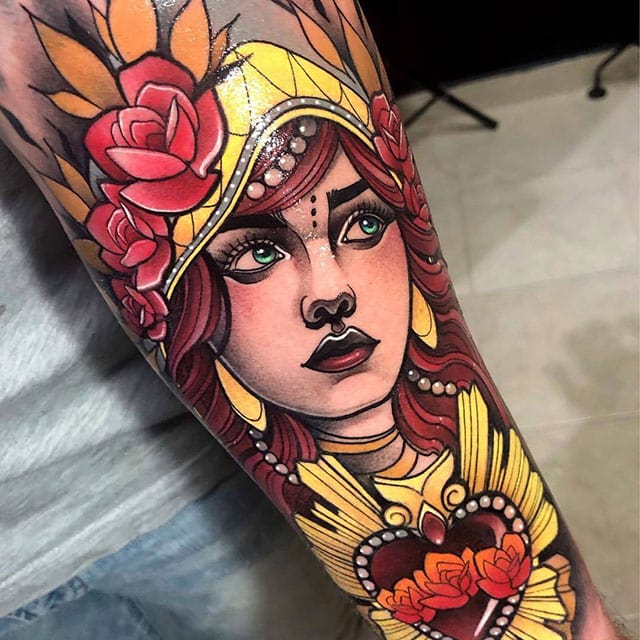
Neotradtional
A neo traditional tattoo is a further development of older tattoo styles and is a blend of several body art styles. A neo traditional tattoo features old as well as new school, but also realistic influences. The motifs used are often similar to “traditional” tattoos, which is another name for “old school”. Classic seafaring motifs such as anchors or compasses are a common choice, although portraits are also very popular. Motifs that had not yet been thought of in old school times can also be chosen for a neo traditional tattoo. Modern techniques make it possible to execute the motifs in an extremely detailed and realistic way. Just like new school tattoos, neo traditional tattoos are also characterised by strong outlines and rich colours. This style is an attractive mix of traditional elements and modern influences. Our Will is particularly adept at this varied style.
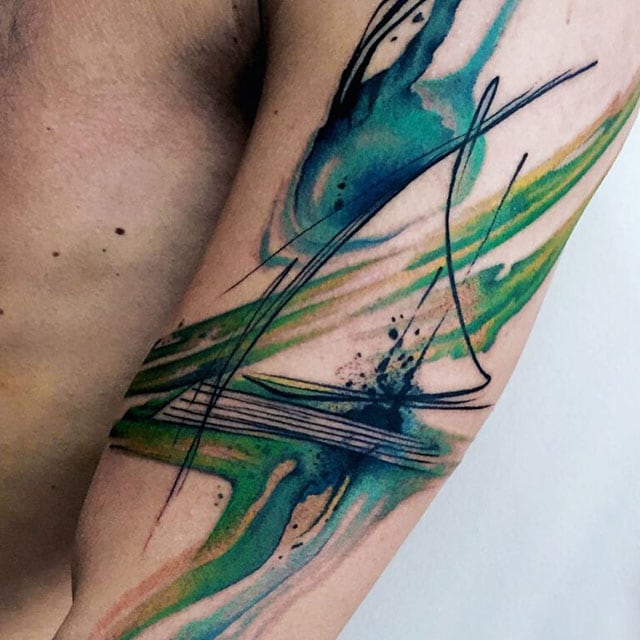
Aquarel / Watercolor
A watercolour tattoo is bright and colourful. As the name suggests, this style was inspired by watercolour painting. Such a tattoo consists of a classic motif with striking, all-over colours. An attractive watercolour tattoo looks as if it had been painted onto the skin with watercolours. Watercolour tattoos are extremely eye-catching and look best large-scale. They do not have outlines; the colours blend softly into each other; this and an intentional slightly blurry look give these colourful tattoos a fascinating lightness. You can be as creative as you like when it comes to the motifs. Whether animal or flower motif, mandala or abstract art – a watercolour tattoo can depict almost anything. You should choose an experienced tattooist to ensure that a watercolour tattoo stays bright and colourful for years. Our tattooist Fernando and Stefi has already created many colourful masterpieces.
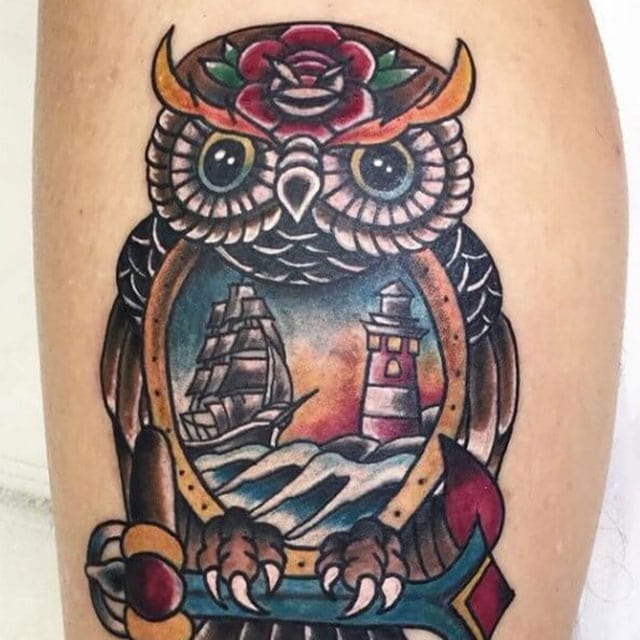
Newschool Tattoo
Thanks to new tattooing techniques, the range of possibilities has increased since the 1990s, which allowed new school tattoos to gradually evolve from the old school style. However, true to their inspiration, new school tattoos still feature thick outlines and strong colours, but the range of colours and the design options are much more varied now. New school tattoos therefore look far more richly coloured and dynamic. Although the choice of motifs is often inspired by the old school style, there are also modern influences. Besides classic seafaring motifs, some people also choose images of cars, cartoon characters or animals as a tattoo motif. The motifs are often exaggerated and executed in a slightly cartoonish style. If you would like an impressive new school style tattoo on your skin, you’re in the best of hands with our experienced tattooist Will.
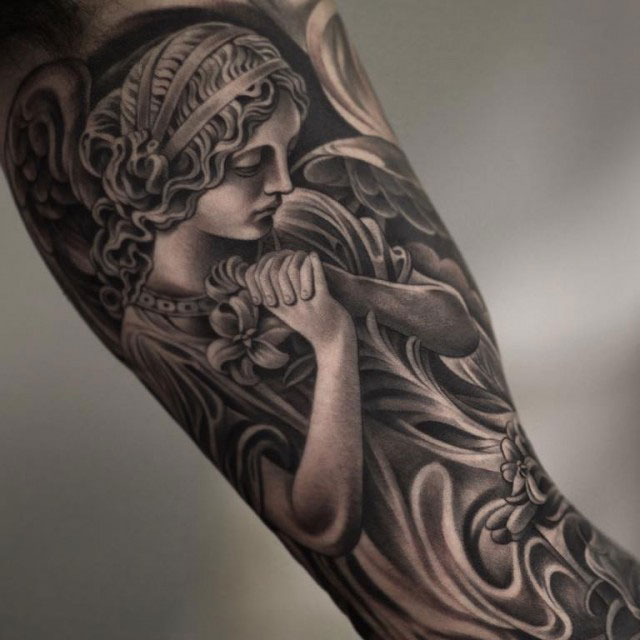
Black and grey
As the name suggests, black & grey tattoos are devoid of any bright colours. This style of tattoo is created by using only black ink in various levels of intensity, as well as shades of grey. The first black & grey tattoos were probably the motifs prison inmates tattooed themselves with in the 1970s. However, the style soon also became popular in the outside world over the next few decades. Shading plays an important role in black & grey tattoos, as it creates well-balanced contrasts. The outlines are mostly executed in a rich black and are then filled in with various shades of grey. The motif portfolio is diverse. Experienced tattooists like Fernando and Will can turn any motif into a work of art, even without bright colours!
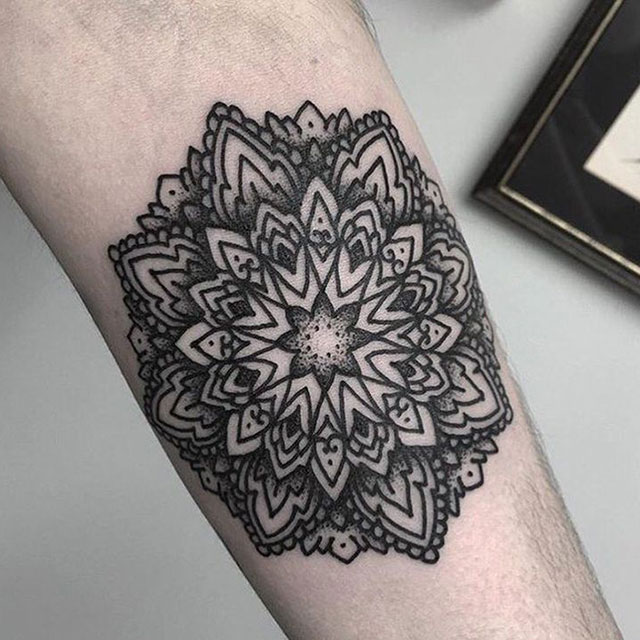
Mandala Tattoo
Mandalas have had an important meaning in people’s lives for many thousands of years. They feature in all forms of religion, from the beliefs of the Incas to the beliefs of the North American indigenous peoples; mandalas are found in Hinduism as well as Buddhism, and also in Christianity. The name “mandala” comes is a Sanskrit word and means “circle”. A mandala tattoo design is based on a concentric circle, although it can also be square. This tattoo style is characterised by symmetry and geometric shapes. A mandala tattoo can also feature various symbols, ornaments or animals. One of the most important elements is the centre, as the entire mandala tattoo starts from there. Tattooing a mandala calls for extreme precision and concentration. You should therefore put your trust into an experienced tattooist, like our tattooists Fernando or Fernando.
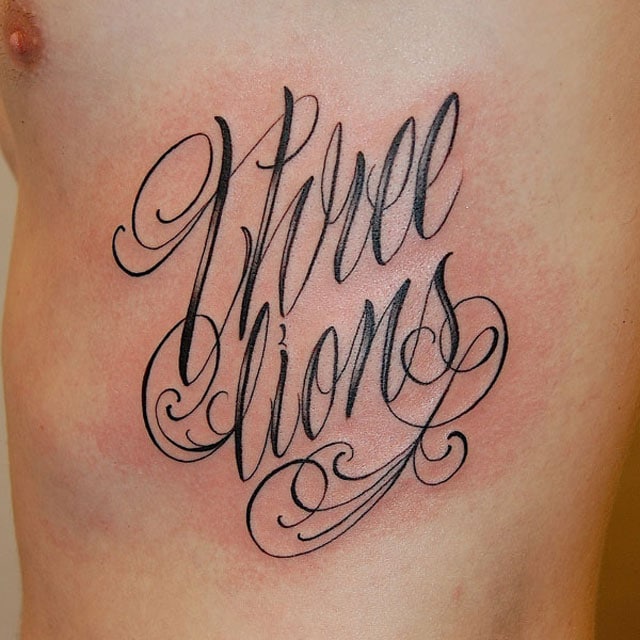
Lettering and Script
All tattoos that spell out a message with letters, regardless of the type or form, are called lettering or script tattoos. Even during the French Revolution, officers often showed their allegiance through words etched into their skin. In the early 20th century, sailors frequently sported tattoos spelling the names of their wives or girlfriends, or had other messages tattooed on their skin as good luck charms. However, the real success story of script tattoos, which are now extremely popular, began in US prisons in the 1970s. In prison, they were a symbol of belonging to a particular gang; however, this style soon also became well-established outside of prisons. A lettering tattoo usually has a profound meaning to the wearer. Besides quotes, Chinese characters or runes as well as the names of partners or the wearer’s children are popular motifs for script tattoos.
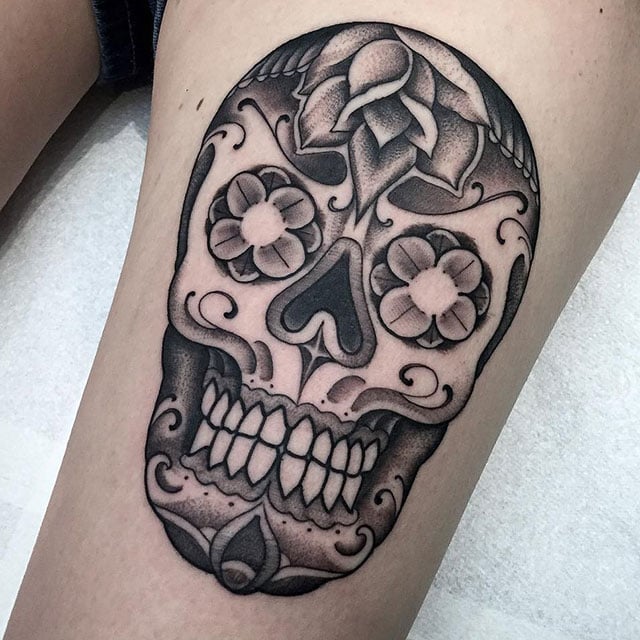
Chicano Tattoo
Chicano tattoos are a form of body art first popularised amongst “Chicanos”, people of Mexican origin who live in the USA, and their descendants. Many of them group together in criminal gangs, and indicate their gang membership with a specific style of tattoo. A Chicano tattoo is usually black or grey, as these tattoos were originally often created in prisons, where the tattooists only had a limited range of tools and inks available to them. The motifs often have a criminal theme, or feature weapons or playing cards. Religious and cultural symbols such as crosses, for example, are also popular. Another group of frequently chosen motifs for Chicano tattoos are portraits of young woman. Extremely widespread is the La Muerte tattoo, which symbolises Santa Muerte, a female saint that is often portrayed as a skeleton wearing a red robe and a golden crown.
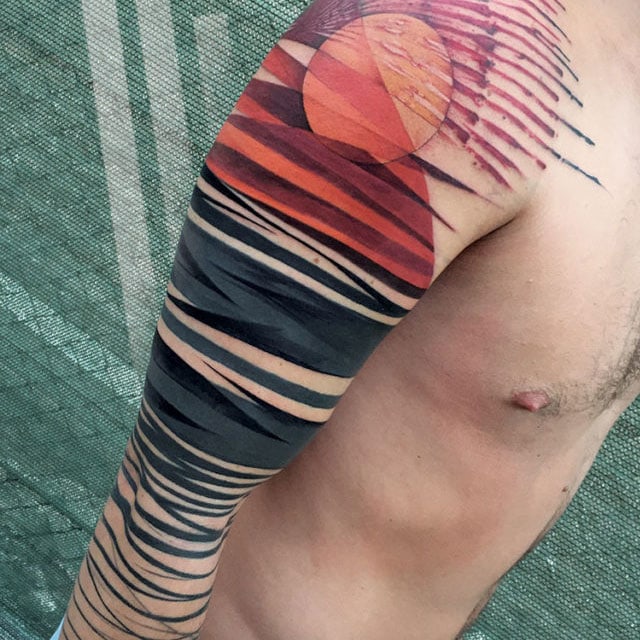
Graphic Style
Minimalist yet nevertheless playful, thickly applied in some places and exquisitely fine in others – a graphic style tattoo is characterised by contrasts. Graphic tattoos are based on realistic motifs, embellished with elaborate details such as curlicues, lines, lettering and geometric frames. The boundaries between graphic style tattoos and other styles such as “trash polka”, dotwork and geometric are therefore blurred.
Typical for graphic style tattoos is the fact that the designs are often reduced and executed using only a few colours. Most of these tattoos are actually simply black and white. If any colours are used at all, then only to specifically highlight certain aspects. Geometric shapes such as circles, squares or rhombuses are often combined to delicately frame the main motif with fine lines.
Creating such a tattoo not only calls for creativity but also for a good eye and a steady hand. These body art compositions will only look attractive if they have been carefully executed, although graphic style tattoos can also be “artsy”, meaning that the tattooist intentionally makes a well-proportioned tattoo look like scribbles. XY is an unparalleled master when it comes to this play with delicate lines and will create a well-designed graphic style tattoo on your skin. In this case can Fernando help you with his idea.